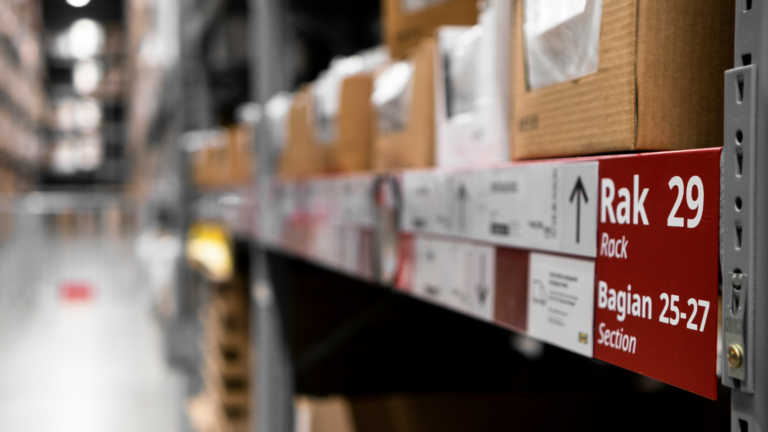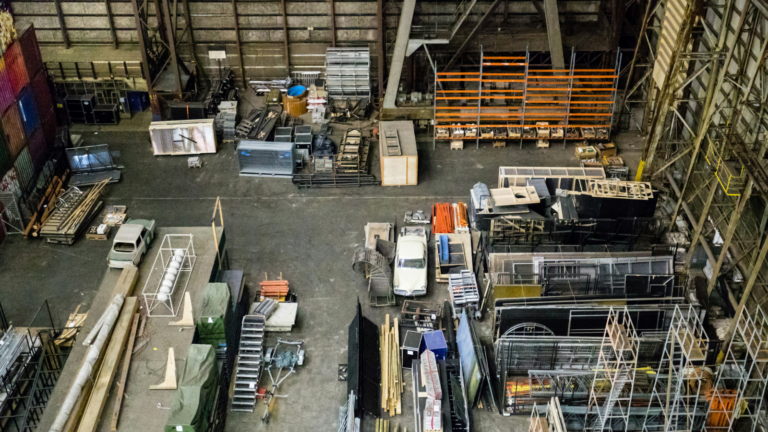How to Monitor Warehouse Employees?

Logistics and supply chain industry has seen massive growth over the years. As a result, the number of people joining warehouses as employees has significantly increased. In 2023 alone, 1.32 million people were working in the warehousing and storage sector. Hence, it is necessary to maintain the worker efficiency including inventory control, order fulfillment, and timely product dispatch.
To optimize the warehouse operations, employees must be monitored. Desktop monitoring software such as Wolfeye makes it possible to monitor employee activity, assuring faultless operations.
This article will cover how using Wolfeye to monitor warehouse worker activities can increase productivity and operational efficiency.
What is Warehouse Activity Monitoring?
Tracking the daily activities of warehouse employees is known as warehouse activity monitoring. Order processing on time, keeping an accurate inventory, tracking product/order movement, making the most use of limited space, and complying with safety procedures are all the tasks that are performed by warehouse employees.
By monitoring these behaviors, businesses may make sure that operations are efficient, expenses are minimized, and customers are satisfied.
Key Responsibilities of Warehouse Employees

A warehouse employee has many tasks as mentioned above. However, the tasks carried out by staff may change depending on the size and work environment of the warehouse. Order picking, packing, shipping, and inventory control are a few jobs that workers in smaller warehouses may complete. Roles in larger facilities are typically more specialized.
Workers might just concentrate on fulfilling orders for quality control or inventory management. No matter what specific tasks are involved, the smooth operation of the warehouse depends on these jobs being completed at time and effectively.
To make thing simple, a warehouse worker’s tasks can be categorized into the following:
- Monitoring and preserving stock levels is known as inventory management.
- Order fulfillment involves choosing, wrapping, and sending out orders.
- Ensuring that products fulfill quality requirements is called quality assurance.
- Safety management is following established safety rules and guidelines.
- Resolving problems and answering questions is known as customer service.
Common Challenges in Warehouse Monitoring

Monitoring technologies in warehouses can increase productivity and efficiency. However, before executing monitoring plan, they may face a few challenges: These challenges are as follow:
Employee Resistance
Employees who are concerned about their privacy may not be willing to provide their data or they can be afraid of micromanagement.
Therefore, the benefits of monitoring must be effectively communicated in order to resolve issues and concerns of employees. Employees should be involved in monitoring the execution process. They should be informed about the purpose of monitoring, which is to support their work, increase safety, and optimize operations. Offering clarity and transparency could increase to trust building among employees.
Technical Difficulties
Warehouse layouts can be complicated especially if they are old. There is a possibility that new monitoring systems would not work flawlessly with the conventional ones. Potential downsides include hardware incompatibilities, communication issues, and difficulties integrating software.
Thorough preparation and testing are necessary before implementing anything. Businesses must consult an IT professional to make sure that the infrastructure is compatible with the new technology. Before the monitoring software is employed across the warehouse, one or two gadgets can be used for pilot testing to help find and fix any potential technical problems.
Data Overload
The amount of data generated by monitoring tools can be challenging to handle especially in warehouses where employees have customer’s data stored in their computers. Without specific goals, the data could end up being more of a burden than a tool.
The mismanagement of data can be avoided by giving particular key performance indicators (KPIs) your attention, and ranking the most crucial data first. You can use tools like dashboards and summary reports that may filter data and present it in a comprehensive manner. Some monitoring tools such as Wolfeye have this feature built in. This saves managers from getting bogged down in the specifics and helps them swiftly find data that can be helpful.
Why is it Important to Track Warehouse Employee Activities?
The day-to-day activity of the warehouse needs to be continually tracked to spot inefficiencies and potential improvement areas. Crucial performance metrics including order accuracy, inventory levels, and shipment schedules are directly impacted by the decisions made by employees. Businesses can find areas where employee skill needs polishing by looking at the tracking data. Targeted training can help an employee who is having trouble, say with order accuracy.
Understanding how employee behaviors impact the warehouse’s overall performance is the primary objective of monitoring. Maintaining employees’ right to privacy while balancing employee monitoring is crucial.
How Does Wolfeye Track Warehouse Employee Activity?
Wolfeye is a software that is designed for monitoring remote desktops. It enables managers to monitor and regulate tasks and operations from a single place which simplifies their management of the warehouse.
The following methods for keeping a check on warehouse worker activity can be employed with Wolfeye:
Live Monitoring
Wolfeye can offer up-to-date, real-time information on staff operations, such as order processing and inventory monitoring. Basically it can monitor everything on the PC of an employee and record it for later monitoring. This makes it possible for managers to spot problems early and take appropriate action.
Inventory Tracking
Wolfeye can be integrated with inventory management software and it can be tracked in real time. Supervisors can keep an eye on stock levels, follow the flow of items, and make sure that inventory records are accurate.
Task Monitoring
Wolfeye can be used to keep an eye on particular jobs, such as packing and order by integrating the software with surveillance CCTV systems. This makes it possible to guarantee accurate and timely order fulfillment.
Analytical Reports
Wolfeye gathers information and compiles detailed data reports. These reports after analysis can be used to pinpoint areas of improvement and enhance the cross-communication among warehouse departments.
Wolfeye is a communication and monitoring solution that allows managers, warehouse employees, and other stakeholders to communicate with one another, ensuring that everything proceeds as planned and that everyone is on the same page.
Why Should You Prefer Wolfeye for Tracking Warehouse Employee Activity?
Wolfeye is easy to use and offers useful information that might enhance warehouse operations. The following are some of the main advantages:
Reduced Costs
Wolfeye contributes to a reduction in operating expenses by regulating employee behavior and anomalies in the product handling.
Enhanced Productivity
Order fulfillment moves along more quickly and efficiently when real time monitoring makes sure that jobs are finished on time.
Satisfied Customer
Prompt shipment and accurate order processing result in satisfied customers, who in turn become recurring customers.
Data-Driven Decision Making
The data provided by monitoring gives information that enables well-informed decision=making, which improves overall warehouse operations.
Legal and Ethical Considerations in Employee Monitoring
Before implementing monitoring software in the warehouse, it is important to carefully analyze the ethical and legal implications. Employers must guarantee that the utilization of the software conforms to pertinent labor laws and regulations, which differ from area to area.
For example, businesses are permitted to monitor employees’ activity under the United States’ Electronic Communication Privacy Act (ECPA), although there are certain restrictions, especially with regard to private email.
Ethical concerns are also important. Workers have a right to privacy, and constant monitoring may lead to mistrust, which lowers employee morale and affects results. Employee understanding of the tracking process is crucial for striking a balance between privacy rights and monitoring. Employers need to be clear about what will be observed, how the data will be used, and the advantages of observation for the business and the employees.
Consent is another imperative factor. Employees must be notified and ideally given consent before any monitoring begins. This can be accomplished through formal contracts or business policies before any monitoring begins. This can be accomplished through formal contracts or business policies.
Employers also need to refrain from micromanaging and make sure that monitoring is done to help workers increase productivity and promote safety rather than to impose undue control over their activities.
Lastly, businesses also need to handle the data they have collected in an ethical manner. This includes protecting the information to stop illegal access and only using it for the intended purpose.
Conclusion
With Wolfeye, you can effectively keep an eye on what your warehouse employees are doing. It assures productive and efficient operations, which aids businesses in boosting revenue and improving customer satisfaction.